80 years after 'Australia's Pearl Harbor,' tensions with China are raising fears of another attack Down Under
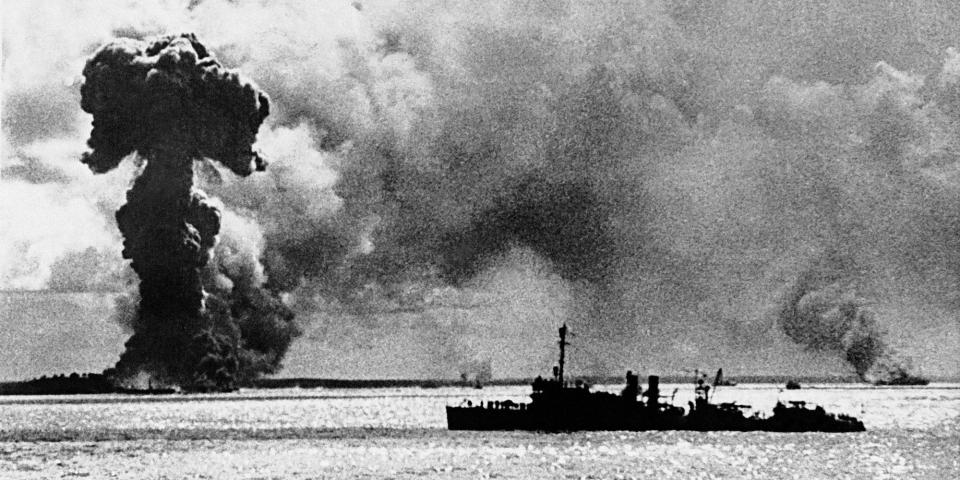
In February 1942, Japan launched the first of more than 100 air raids on the city of Darwin in northern Australia.
Darwin's location and the military bases there made it one of the Allies' most strategically important ports.
Darwin is still strategically important, but now Australia is worried about threats from a different source: China.
Just before 10 a.m. on February 19, 1942, 188 planes from Imperial Japanese Navy aircraft carriers arrived over Darwin, Australia, and attacked the city and its port. They were followed about an hour later by a second wave of 54 land-based bombers.
It was the largest attack on Australia ever by a foreign power and the first of what would be more than 100 Japanese air raids on mainland Australia by war's end.
Eighty years later, it is remembered as a sobering moment in Australian history, both because of the damage to Darwin and the effect it had on the early war effort.
Today, amid rising tensions with China and as China's military increases its capabilities and reach, the attack is a reminder of Australia's vulnerabilities.
A dire time
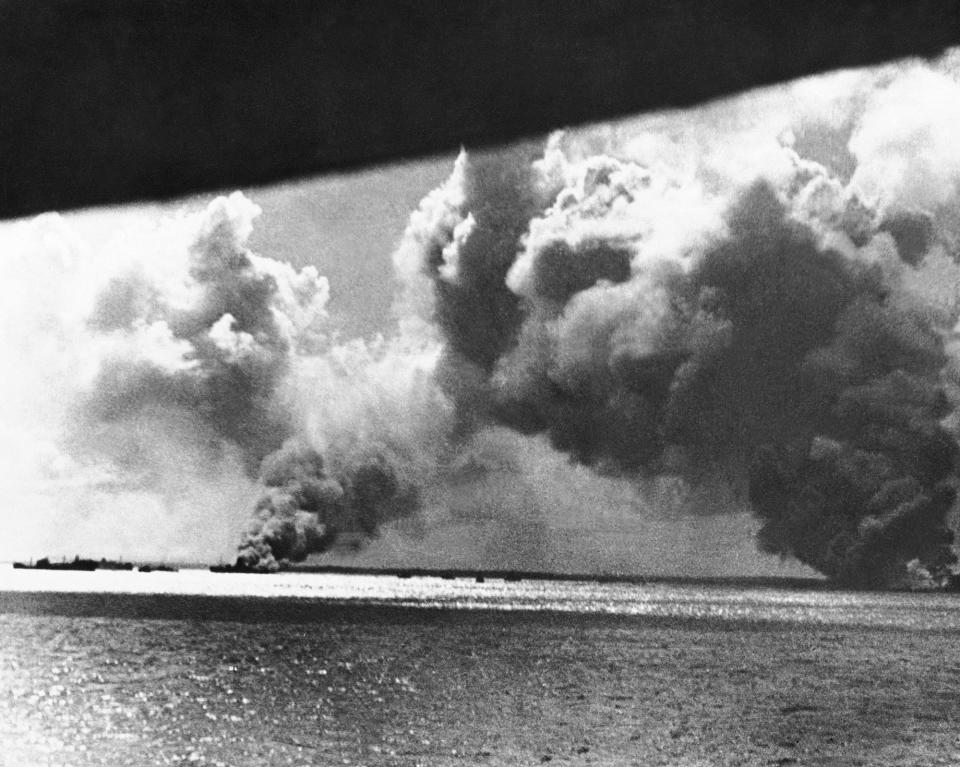
By February 1942, the Allies faced a dire situation in the Pacific.
The attack on Pearl Harbor sunk or seriously damaged the core of US Navy's Pacific Fleet — except its aircraft carriers — and the Japanese invasions of the Philippines, Wake Island, and Guam were either outright or soon-to-be victories for Japan.
Meanwhile, the Japanese invasions of Malaya and the Dutch East Indies resulted in stinging defeats for the British, Dutch, and Australian defenders, and Japan was poised to strike the islands of Timor and Java northwest of Darwin. Those victories would give Tokyo control of much of the South China Sea and corner Australia.
At the time, Darwin, capital of Australia's Northern Territory, was a small town, but its location and the air and naval bases constructed there before the war made it one of the Allies' most strategically important ports.
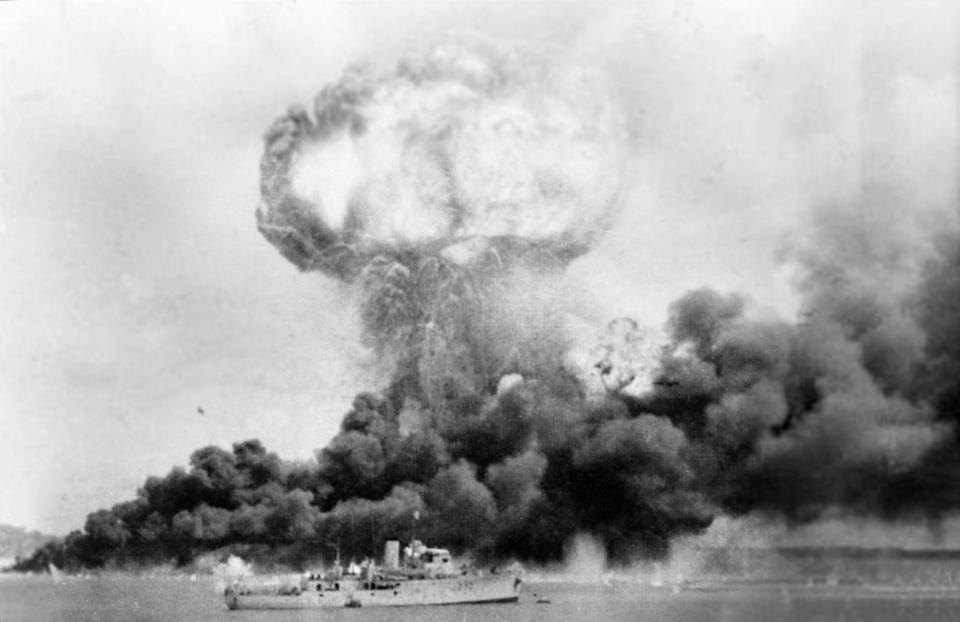
It became a base of operations from which troops and supplies were sent to the front, as well as a refueling and rearmament station for submarines, warships, and aircraft.
By late January 1942, additional defenses had been constructed, and tens of thousands of Allied troops and hundreds of Allied aircraft and warships were regularly passing through Darwin's ports and airfields.
The massive Allied presence also made Darwin a target.
As the Japanese prepared to take Timor and Java, they decided to strike Darwin with carrier aircraft and long-range bombers to eliminate it as a resupply base and take out as many transports and warships as possible to further hamper the Allies' ability to fight.
The attacks
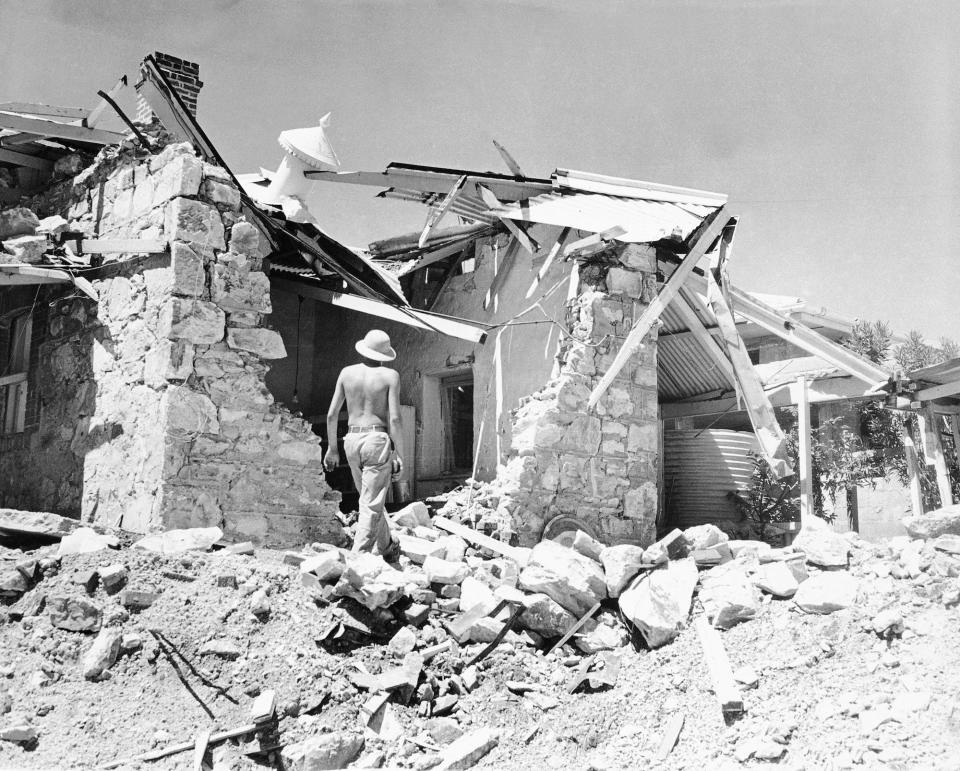
The first wave of 188 aircraft took off from the carriers Akagi, Kaga, Hiryū, and Sōryū as they sailed south of Timor.
The carriers had all taken part in the Pearl Harbor attack, and the pilot leading the first wave, Cmdr. Mitsuo Fuchida, had led the first wave there as well.
Over 50 ships were in or around Darwin's harbor when the air raid began at 9:58 a.m. Torpedo-bombers attacked the ships and harbor infrastructure, while the dive-bombers and fighters attacked the airfields, the town and its harbor, and any remaining ships.
The second wave of bombers, flying from Japanese bases in the Dutch East Indies, arrived an hour later, attacking the Royal Australian Air Force base.
By the end of the day the Japanese had dropped some 680 bombs, more than were dropped at Pearl Harbor (though the overall tonnage of bombs dropped at Pearl Harbor was higher).

For all of its military buildup, Darwin's air defenses were woefully inadequate. The city didn't even have a functioning radar, and nine out of the 10 Allied planes that managed to take off to fight the Japanese were shot down. Japan lost just four aircraft.
At least 235 Allied personnel were killed, with 300 to 400 more wounded. The largest single loss of life came aboard the American destroyer USS Peary, which sank with 88 of its 144-man crew. Eleven Allied ships were sunk and 15 heavily damaged, with 30 aircraft destroyed. The city, harbor, and airbase were thoroughly wrecked.
The attacks left many of the available ships destroyed or damaged, crippling Allied efforts to supply the defenders of Java and the Philippines. They also caused a panic, as many Australians believed an invasion was imminent and fled south.
There was never an invasion, but the Japanese launched 100 air raids on northern Australia in the following years, the last in November 1943.
A new threat
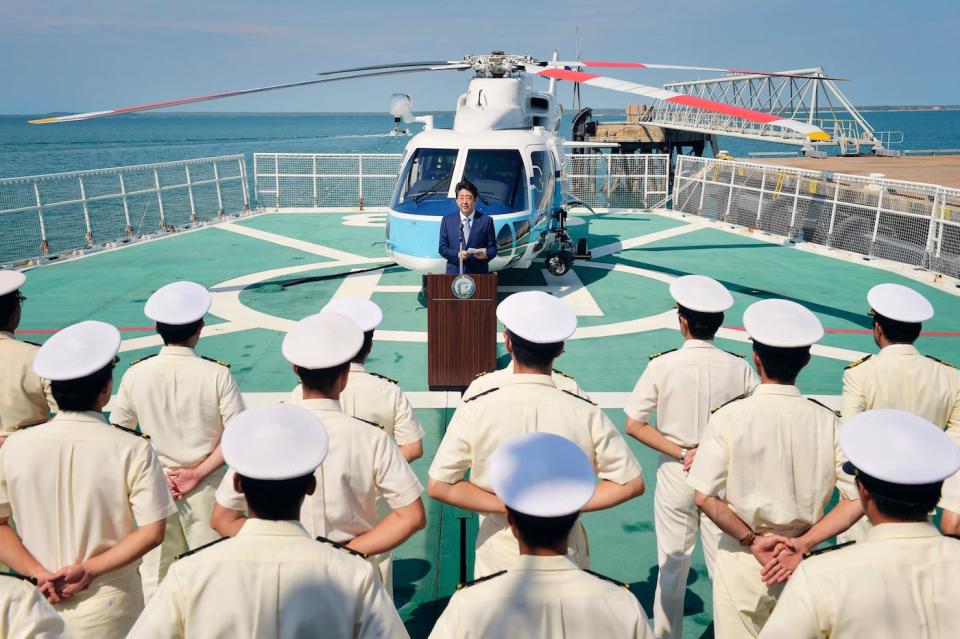
Australia's strategic environment has changed drastically since World War II. In 2018, Shinzo Abe became the first Japanese leader to visit Darwin since the war, and the countries continue to bolster their defense ties.
But eight decades later, Australia is again thinking about threats to its northern shores, this time from China.
Relations between Beijing and Canberra have deteriorated, and China's military modernization — and threats — worry many in Australia.
China has an arsenal of advanced long-range missiles that is getting larger and more capable. In addition to its ICBMs, China now fields intermediate-range ballistic missiles that can reach Australia.
China's navy — the largest in the world — also has surface ships equipped with long-range missiles. China's small but growing fleet of nuclear-powered ballistic-missile submarines also carry missiles that can reportedly reach as far at 5,000 miles.

Chinese air force H-6 bombers with aerial-refueling support or flying from South China Sea islands may also be able to reach northern Australia with long-range missiles such as the CJ-10K or potentially hypersonic weapons. China's Xian H-20 stealth bomber, still in development, may be able to carry more ordnance farther than China's conventional bombers.
Australia is pursuing its own military modernization in response to these threats. It plans to buy or develop its own long-range missiles and to acquire 72 F-35 stealth fighters, at least 44 of which are already in service.
Military investment around Darwin is also increasing. The US has committed nearly a billion dollars to defense-related projects there. US Marines have deployed to Darwin for years, and the AUKUS security pact is expected to bring more US forces there in the years ahead — though a Chinese firm's lease of the port of Darwin has raised concerns.
Darwin "remains Australia's watchtower in the Indo-Pacific," Michael Gunner, chief minister of Australia's Northern Territory, said last year on the anniversary of the attack.
"This day reminds us that Darwin, and indeed the entire north of Australia, play an important role in the security and prosperity of this nation," Gunner said. "It was true then, and it is true now."
Read the original article on Business Insider

 Yahoo News
Yahoo News 